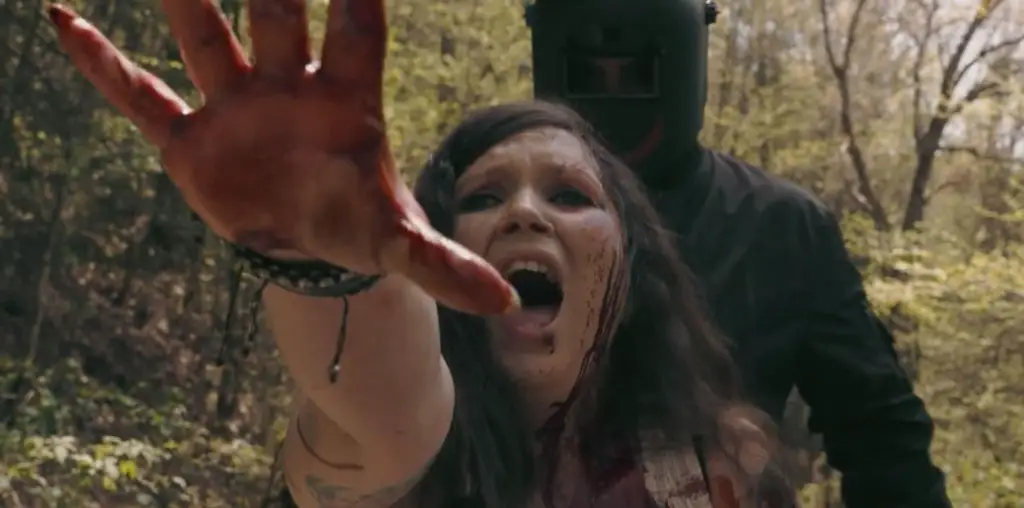
Manic shuns the high-gloss artificiality of big studio productions, preferring a gritty, jittery vision borne of handheld, digital camerawork. When Cheadle throws questions to his audience of patients, and they rattle back answers, the viewer feels immersed, as if also participating in this intimate psychotherapy group. “With this type of material,” explains Melamed, “you’ve got to tell the story in a way that is organic. To capture spontaneous performances, it’s essential to use small cameras as you would with digital.”
To heighten his film’s realism even further, Melamed shot several improvised scenes not originally included in Manic’s script, giving its performances an urgent, almost documentary edge that doesn’t resemble mannered acting. “In the finished movie,” he proudly proclaims, “you can’t tell what is improvised and what is scripted. It flows together pretty seamlessly.”
Melamed admiringly cites a scene in which Gordon-Levitt sits on a bench with Deschanel. “His character tells a story about his mother, and how he almost hit her. He completely improvised all of it.”
Gordon-Levitt, best know for his work on T.V.’s “3rd Rock from the Sun” series as alien Tommy Solomon, deserves kudos for such on-the-spot improvisation. However, he’s most effective in Manic when he’s not engaged in dialogue. His eyes are steely slits that warn strangers to keep a distance, and his intense masculinity brings to mind a young Russell Crowe. “Why are we supposed to trust you guys when things like this happen?” his character barks at Dave after another youth is victimized within the supposedly safe walls of Northwoods. The world-weary vigilance and distrust reflected in 22-year-old actor’s searing eyes are those associated with a much older man, and make Lyle a tragic figure. He’s disillusioned with life even before his post-school existence has begun.
When asked if he studied actual patients to research the role of Lyle, Gordon-Levitt sounds displeased. “I don’t like the word studied,” he confirms before a brief pause. “It makes it seems as though they are lab rats. The most important thing that came across for me concerning kids like Lyle, was that I could be friends with these guys. They’re not some strange, alien breed. These characters are dealing with the same issues of love and hate that any human being does.
“When I spent time with different people that had been in mental hospitals, we never really spoke about the hospital, or about their rage, or childhood. We just hung out like we would if we had met at a party, sitting around smoking cigarettes and talking about music.”
In fact, Gordon-Levitt often kept himself at arm’s length from the psychiatric information filling the charts of such patients. “I did speak with a psychologist, but I tried my best to ignore the clinical point of view. I didn’t read up medically on what it’s like to be bipolar, or have violent outbursts. My character wouldn’t have the benefit of that knowledge.”
In addition to its clear-eyed look at mental hospital residents as people first, and patients second, Manic also provides a realistic glimpse at the exhausting, emotionally draining routine of a therapist. During one clever montage, Dave interviews each of his patients from behind a sprawling office desk. As each teen takes a chair in front of his, the psychiatrist asks, “What kind of progress have you made since you’ve been here?” The camera cuts between his weary-yet-hopeful face, and the indifferent answers and flat expressions of his charges. We watch Cheadle’s shrink fight off frustration, wondering whether any of these lost souls will ever improve.
“Therapists must have tremendous empathy to be good at their jobs,” exclaims Melamed, tipping his hat to mental health professionals. “And just like a filmmaker would, I’ll bet that therapists get some kind of catharsis being in group therapy themselves. They’re unheralded. Society only heralds our sports heroes.”
While Manic refuses to stereotype its subjects as being nothing more than the sum of their diagnoses (“Just because you’re diagnosed bipolar,” confirms Melamed, “doesn’t mean you also have anger issues”), its director and star are quick to point out how their own personality quirks parallel many mental health conditions. “I’ve never had myself psychoanalyzed,” says Gordon-Levitt, “but I do know that my mind is often divided into two states. Whatever my focus is on any given day, I can be depressed and nervous about it and not think I’ll be able to handle it, or I can feel wonderfully confident, like I’m gonna do something pro-active about my life, and have a much more positive outlook about things. Each day, I have these turns. I think that everybody does.”
“That’s what Manic is all about,” the actor confirms. “It’s not so much about a mental institution, but about the conflicts, struggles, and resolutions that are presented by life. These things are not at all exclusive to a mental institution. They’re just human traits.”
The struggles that Gordon-Levitt speaks of bring us back to the world of Greek mythology, and Sisyphus. “The movie does imply hope,” he confirms, “and it does call to you not to give up and surrender to apathy in the face of all that’s wrong with the world. It shows that one shouldn’t lash out with hostility and violence, but rather, try to buckle down and accept the pain of the struggle. Live through it and try to grow.
“Sisyphus pushed a boulder painfully up a mountain, only to watch it fall down. You can curse the world, and kick the boulder, and break your toes. Or, you can rally and sing a song to yourself while you’re walking down the mountain. Manic fits rightly around this idea, that you can surrender and give up to the absurdity, or embrace it and live an engaged life.”
